How to Choose an Electric Toothbrush
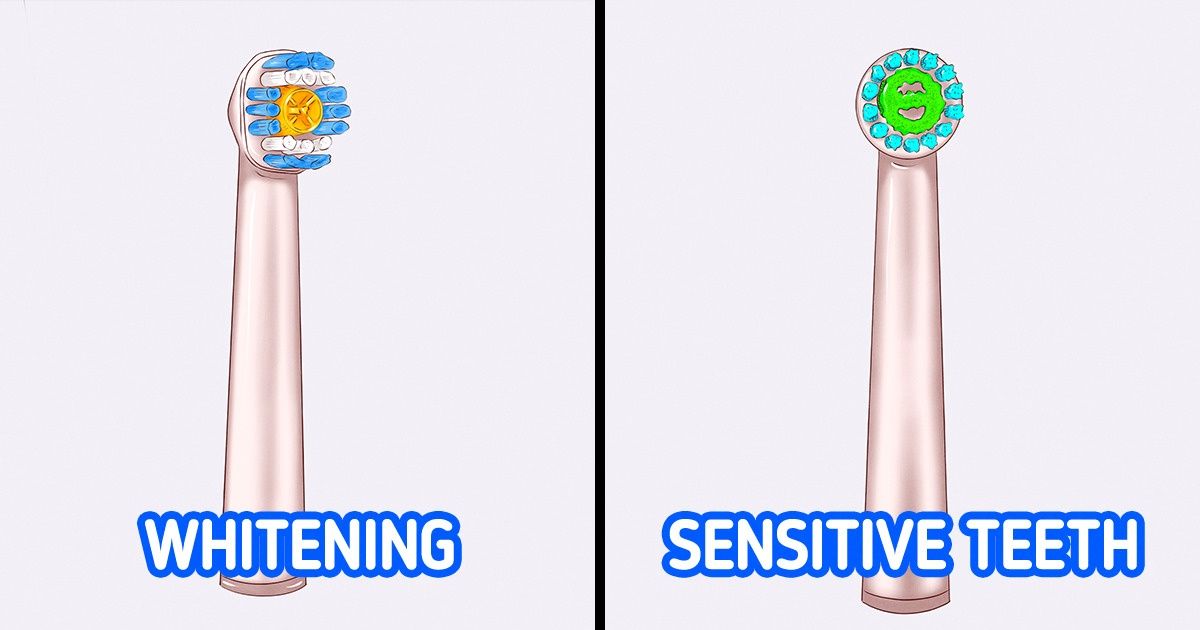
Research shows that electric toothbrushes are 21% better at removing plaque and 11% more likely to prevent gum disease. Therefore, buying this device is considered a good investment in the health of your teeth. And though the initial investment cost can be daunting, it’s still a good way to save money since several people can use one toothbrush with their personal nozzles.
5-Minute Crafts will tell you what types of electric toothbrushes there are and what to pay attention to when shopping for such a device.
The recommendations in the article are general. We advise that you contact your dentist to make sure there are no contraindications and to help you choose the right brush.
1. Types of electric toothbrushes
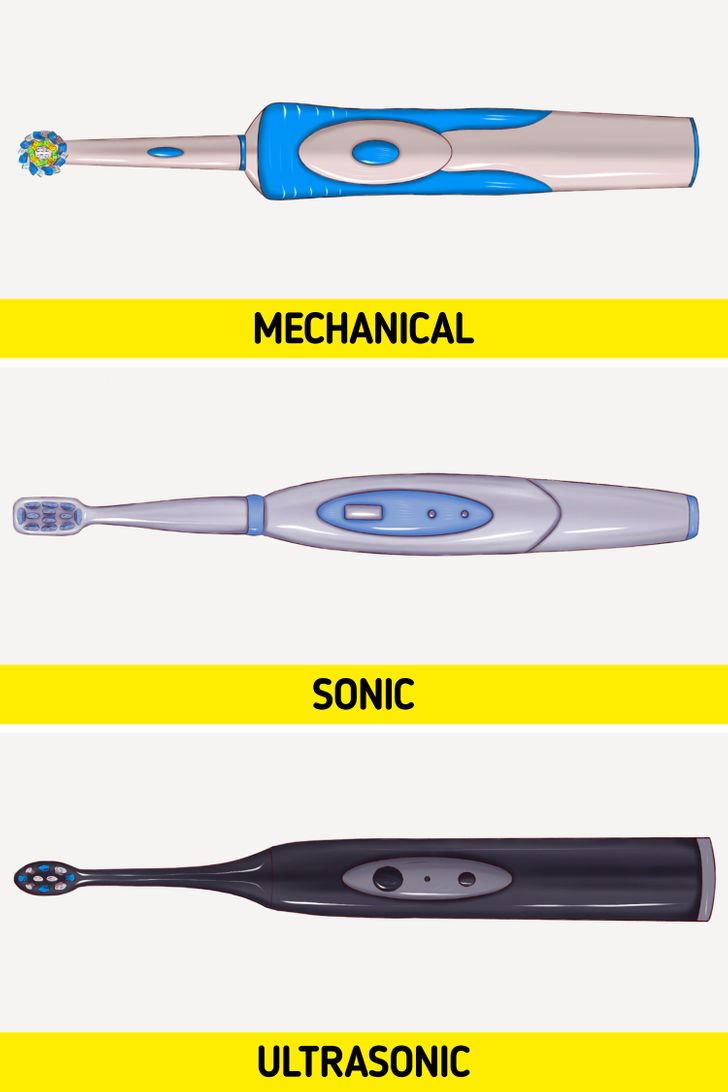
-
Mechanical: The cleansing head of such brushes is driven by a built-in motor. Thanks to this, the brush rotates, pulsates, reciprocates, and cleans the surface of the teeth.
-
Sonic: The oscillation of the brush comes from generating sound waves. They create a special range of movement with the bristles and form a homogeneous mixture of water, paste, and air inside the oral cavity. This mixture circulates and the flow of liquid in the mouth gets to the hard-to-reach areas where a lot of plaque tends to accumulate.
-
Ultrasonic: It’s the most powerful type of brush that’s based in ultrasonic technology. Due to the increased vibration, these brushes “accelerate” to 2.4 million movements per minute. If we compare these to sonic brushes, the speed of their vibration fluctuates between 9,000 and 40,000 movements per minute. The high frequency allows you to effectively destroy plaque without mechanical impact. All you need to do is put the brush on your teeth.
2. The movement of the head
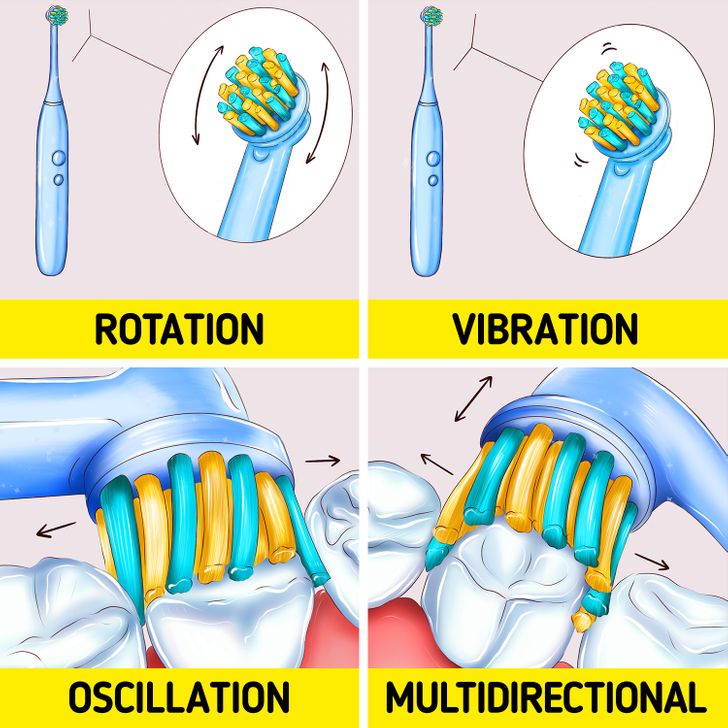
Electric toothbrushes combine one or several types of movements.
-
Rotation: A small round head quickly rotates and makes many circular movements per minute.
-
Vibrations: The head vibrates, creating pulsations and the extra movement of bristles.
-
Oscillations: The head makes sweeping movements. It moves bristles from one side to the other or rotates, changing its direction after every spin.
-
Multidirectional: The head quickly moves from side to side, then up and down.
There is no convincing data that some movement types are better than others. However, research that compared the efficiency of regular toothbrushes and electric ones proved that rotation oscillation models are the best pick.
3. Heads
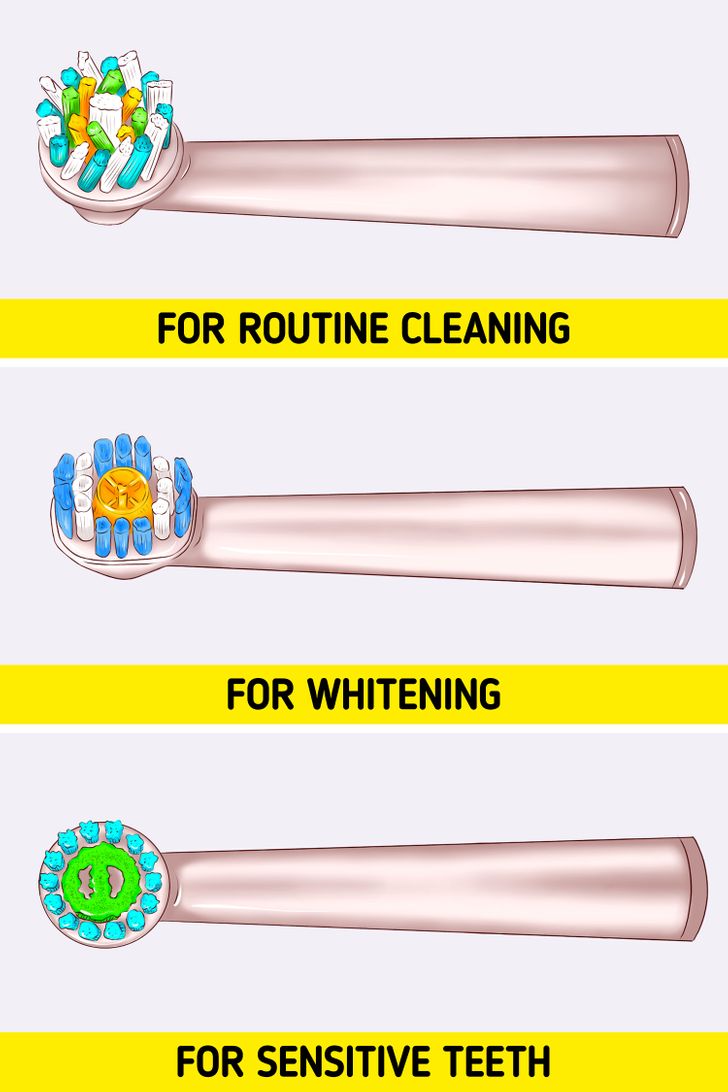
Big manufacturers offer a wide range of changeable heads. For example, one type can be good for regular tooth brushing, and the other one, for whitening and improving the condition of the gums. You can always use the same head or change it according to your current needs.
Also, heads are divided according to the stiffness of the bristles. It can be very soft, medium-hard, and hard. Experts recommend using a toothbrush with soft bristles. Harder bristles can damage the enamel on the teeth.
Moreover, it’s recommended to change the head of the brush every 3 months for optimal oral hygiene. That’s why you need to take into account not only the type of the head but also its cost when choosing the brush. In order to save some money, opt for a model with inexpensive removable heads and buy them in jumbo packs.
4. Cleaning modes
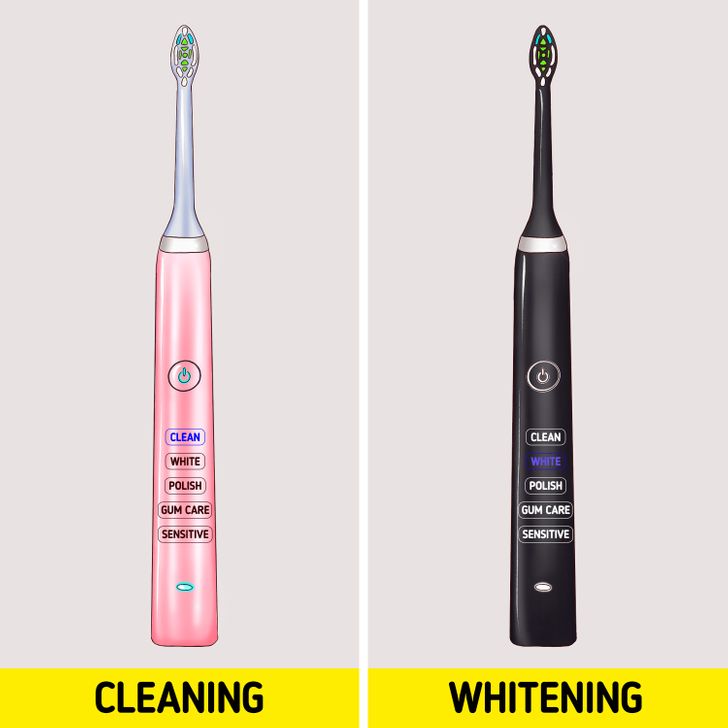
All electric toothbrushes have at least one cleansing mode. It’s called “clean” or “daily clean,” and it’s set by default. Such a mode is suitable for almost everyone.
Different models can have additional cleansing modes, which can include:
- “whitening”
- “gum care”
- “for sensitive teeth”
- “deep cleaning”
- “tongue cleaning”
Each mode differs in power and cleaning time. Thus, the modes for deep cleaning and whitening typically last for 3 minutes instead of the usual 2, while the modes for sensitive teeth and gum care require less bristle movement for more gentle cleaning.
5. Source of power
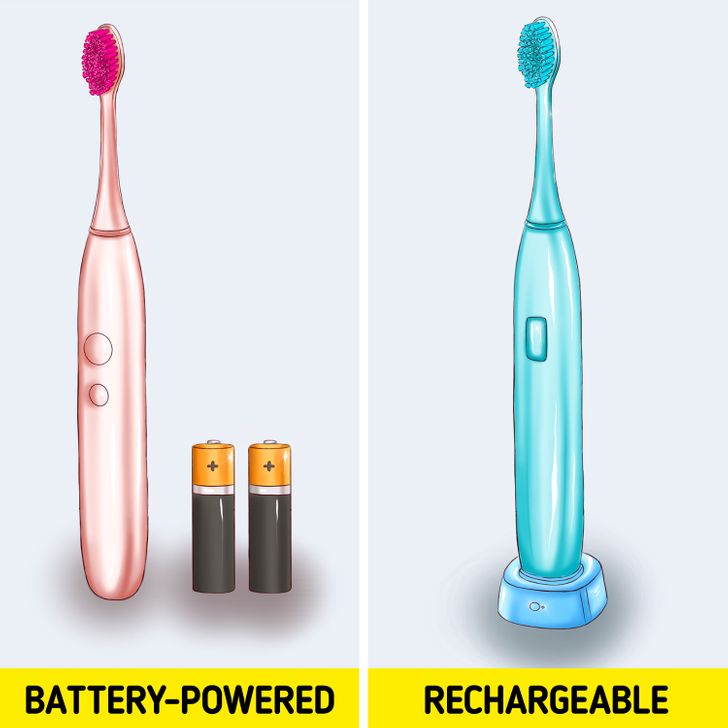
Electric toothbrushes are either battery-powered or work from a built-in battery.
As a rule, battery-powered models cost less but you’ll have to spend money on replaceable batteries. However, you can save some cash here as well if you buy rechargeable batteries and charge them periodically.
Models with built-in batteries come together with a charger. Make sure to take note of how long the battery lasts and how often you’ll need to charge it before making the purchase.
6. Additional functions
-
The timer helps you to brush your teeth for 2 minutes precisely — that’s the time dentists recommend one should spend brushing their teeth. Some toothbrushes automatically stop after 2 minutes, while others start to vibrate when the timer stops.
-
The pressure sensor lets you know if you press too hard. Hard pressing can harm tooth enamel. The sensor warns you to weaken it with the help of light or sound signals.
-
Indicator bristles help you to replace the brush’s head in time. When a replacement is required, the bristles will slowly fade to white, losing their initial color.
-
Synchronization with a smartphone lets you control the cleaning process and gives you live instructions for better results.